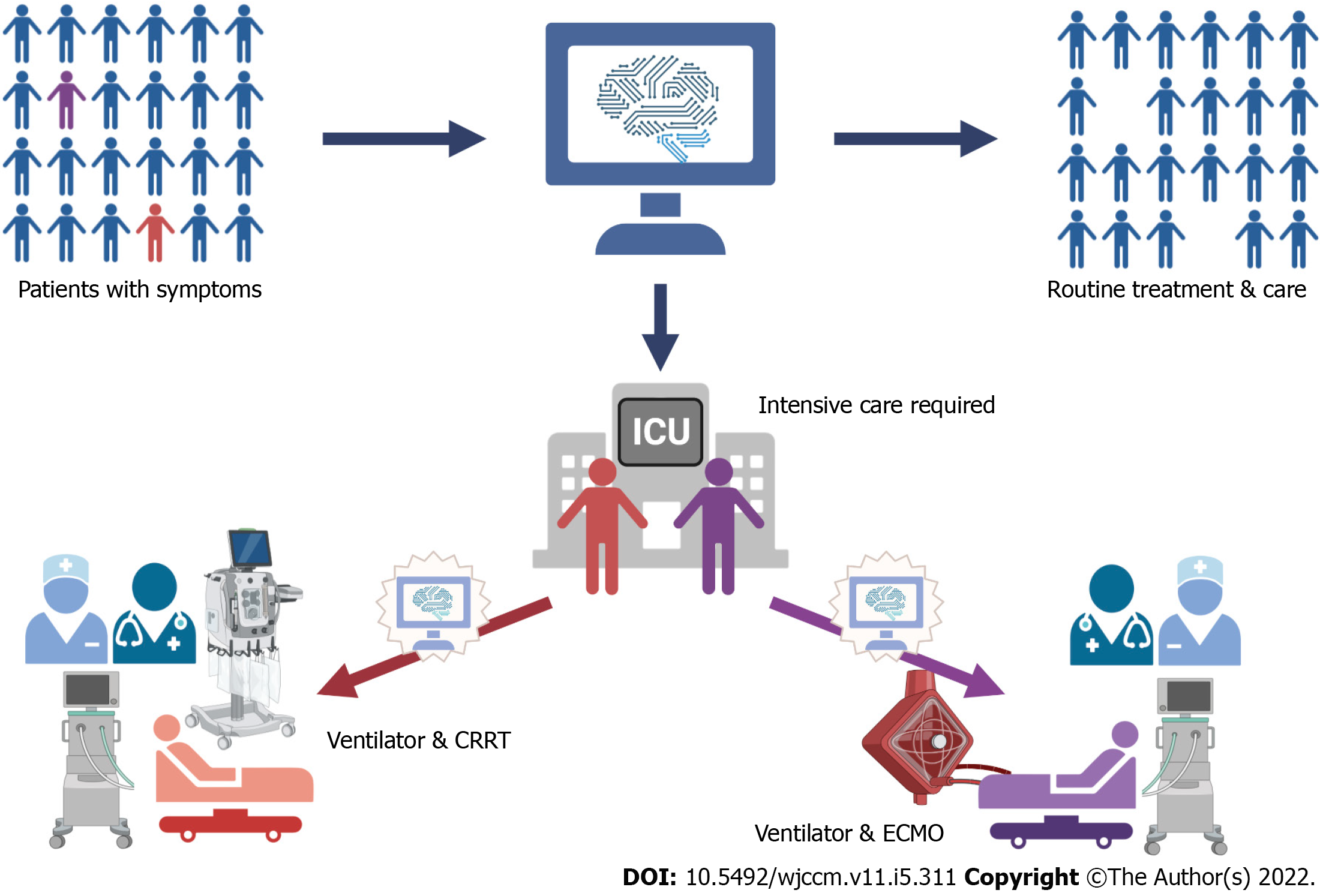Copyright
©The Author(s) 2022.
World J Crit Care Med. Sep 9, 2022; 11(5): 311-316
Published online Sep 9, 2022. doi: 10.5492/wjccm.v11.i5.311
Published online Sep 9, 2022. doi: 10.5492/wjccm.v11.i5.311
Figure 1 Interaction between artificial intelligence development and artificial intelligence deployment.
Artificial intelligence (AI) development and AI deployment should be combined to revise current models and offer tangible benefits derived from current researches. AI development should find the right interaction between three roles: physicians, data and algorithm. AI deployment in the form of prospective randomized controlled trials can facilitate published models to generate bedside merits and evaluate whether major biases exist. The results from deployment testing can, in turn, offer insights into the development and modify the substandard algorithm. CRRT: Continuous renal replacement therapy; ECMO: Extracorporeal membrane oxygenation.
Figure 2 Resource allocation in the intensive care units.
The applications of machine learning can target patients in need of intensive care units (ICUs) and predict the use of ICU resources. Machine learning can predict ICU transfer in hospitalized patients and predict the use of ICU resources, such as mechanical ventilation. It gives the chance to make the most use of resources, especially in ICUs where demand and supply frequently mismatch. Prediction in interventions, such as mechanical ventilation, would mean that the management groups can foresee changes and mobilize resource, such as equipment and staff, to cope with such demands in advance which is a positive factor for patient outcomes. AI: Artificial intelligence.
- Citation: Luo MH, Huang DL, Luo JC, Su Y, Li JK, Tu GW, Luo Z. Data science in the intensive care unit. World J Crit Care Med 2022; 11(5): 311-316
- URL: https://www.wjgnet.com/2220-3141/full/v11/i5/311.htm
- DOI: https://dx.doi.org/10.5492/wjccm.v11.i5.311














